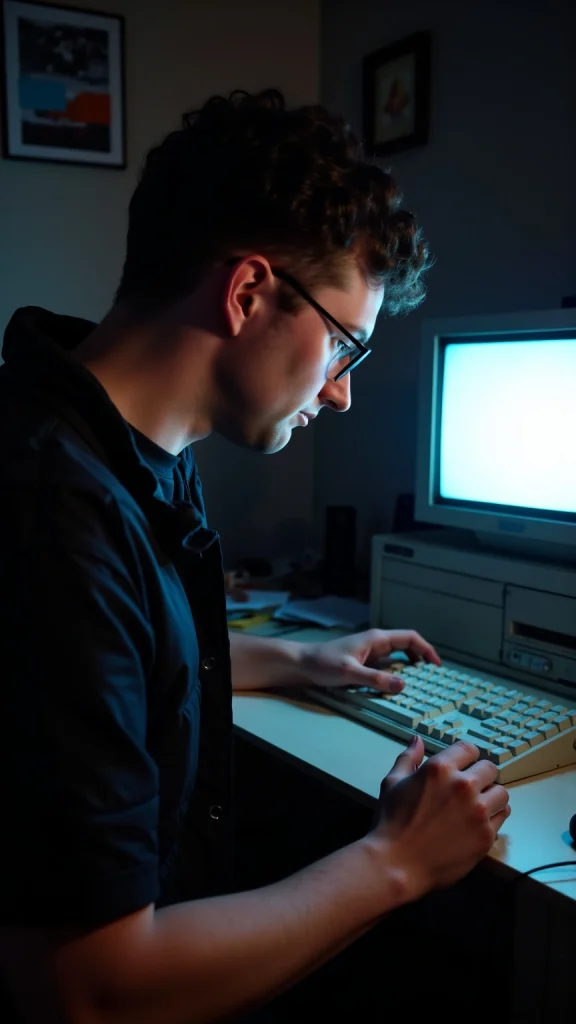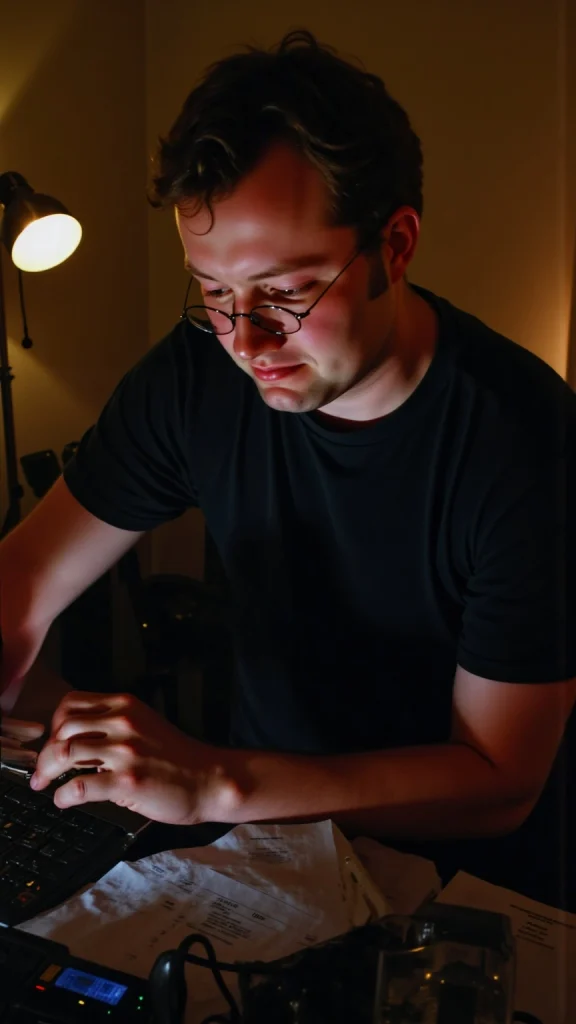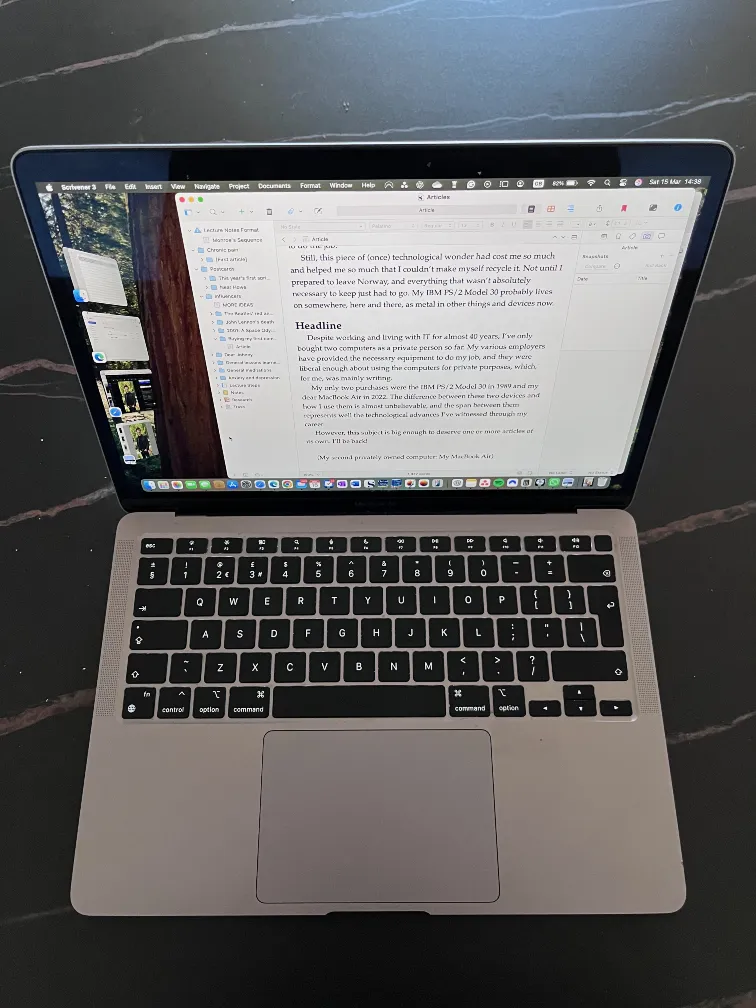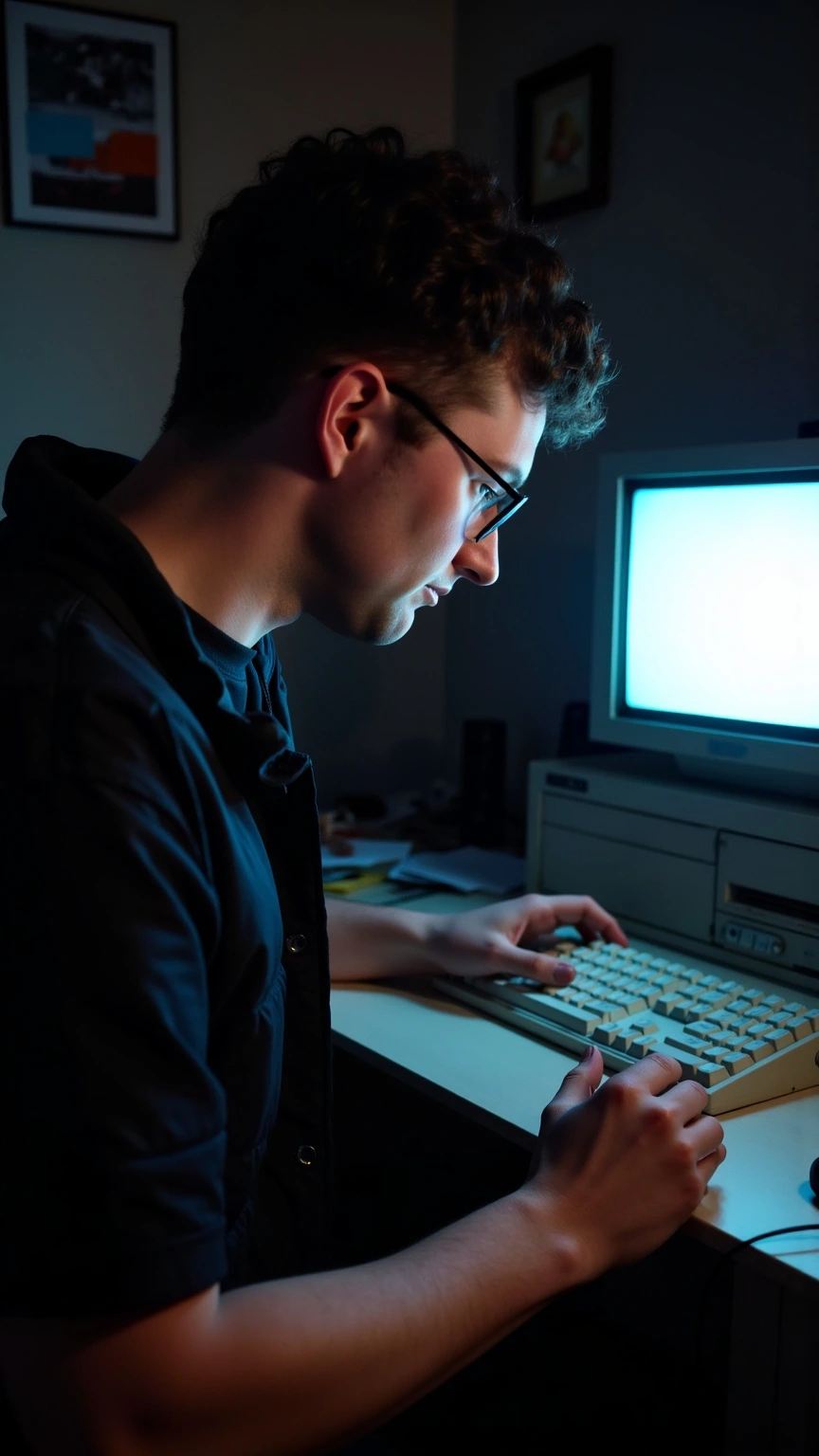When I bought myself a future (and almost went bust)
I made a big decision in the spring of 1989: I would buy myself a Personal Computer. This might not seem like a life-changing event today, but it was for me back then for several reasons:
- It was still not a self-evident necessity to own a computer. Most homes didn’t have one.
- It was a deliberate decision to change my life and career, and I didn’t make many such decisions early on in my life.
- It cost a lot of money, and I was a poor student.
How did I come to this conclusion anyway?
Slowly finding my own way (by trial and error)
College
When I started college in 1981, three areas of specialisation were available for those of us who chose a university-preparatory college: Science, Social studies, and Languages. It’s hard to know what I would have chosen if I’d had more self-confidence and a stronger will. Most likely, I would have selected Languages, or I could have moved away to the nearest city, where they had more to choose from, and done Music.
However, university-level education wasn’t a tradition in my working-class family (I was the first to reach a degree at today’s bachelor’s level some years later). I strongly felt that Science was the only acceptable thing to choose when I was 16 because it could lead to a technological degree, which, unlike other options, could lead to something considered “real work” in my family.

University Part 1
When I left college, I still lacked self-esteem and free will, so I started studying for an engineering degree in electronics. I was aware from day one that this wasn’t me at all. However, where I came from, you didn’t quit what you had started, so I stayed for two years and finished the degree with debatable scores.
Teaching computer science
The subjects that agreed with me the most and caught most of my attention were Digital Technologies and Microprocessor Technologies (basically, how a computer works on the inside). This gave me a temporary job in a technical college, teaching the same subjects on a slightly lower level. This, in turn, worked to my advantage when I did my compulsory National Service, where I taught the same subjects in a military technical college.
University Part 2
By then, one thing was clear to me: I didn’t want to do electronics for the rest of my life. Inspired by a friend in the Army (no, I was still not impressively self-sufficient), I decided to expand my education with a degree in business administration and finance when I again became a civilian.
And now I’ll finally start zooming in on my point here: Knowing quite a lot about what happens inside a computer, I began to see how the technology could benefit real people in real organisations, and I specialised in what was then called Administrative Computing.
Being 24 years old already, I couldn’t afford to pursue a high-level degree (corresponding to a master’s degree today). Still, it dawned on me that my strength could be having two legs to stand on: my technological and business background.
However, I needed to know much more about the (then) future of computing: the Personal Computer. To learn enough, I decided I needed to own one.

A heavy investment
I chose to buy an IBM PS/2 computer because IBM was still the technology leader in the area of PCs. Besides, I believed they would continue to be so forever. I was wrong about that, which led me to buy a somewhat more expensive computer than necessary.
I paid 20,000 Norwegian kroner for my IBM PS/2 Model 30, approximately £1,800 in 1989. This might sound bad enough, but £1,800 in 1989 is worth more than £4,600 in today’s money. Do you think that’s all? No!
Of course, I couldn’t afford such an expense on my student loan allowance. So, I put on a blazer and went to the bank. They reluctantly granted me a loan with an interest rate at the astronomical level of 20%. When the bank had got all its money back a few years later, I’d probably paid twice the original price of the computer.
Quite an investment indeed! I was rather skint for a while.
I didn’t have any pictures of my IBM PS/2 Model 30, but all sorts of things can be found on YouTube.
I’d say it paid off anyway
Well, not immediately. Far from it. After the 1987 stock market crash had shaken up the global economies and the yuppy 1980s were definitely over, work wasn’t easy to find for someone with a fresh degree in business administration. However, I could manage by leaning on my other leg, the technology one, for a while.
I dived into learning every in and out of my PC, supported by books like Peter Norton’s Inside the IBM PC. There was a time when I honestly could say I understood everything going on inside a Windows/Intel-based computer, although that’s long past now.
Slowly, I rose from doing simple user support via working as a WinTel engineer, turning increasingly from hardware towards software and qualifying as a Microsoft Certified System Engineer and Microsoft Certified Trainer before the turn of the millennium.
From 2002, I held various manager positions over the next 20 years, leaning slightly more towards my business administration background again, but still within IT.

Early retirement from service
So, I think I’m correct to say I bought myself a future when I nearly over-stretched myself financially and bought my old IBM PS/2 Model 30. Having ready access to a computer, combined with my never-ending desire to learn, catapulted me into a career in IT that I never deviated from until I emigrated to England a couple of years ago.
Perhaps my career would have been entirely different if I’d had more self-confidence to follow my dreams and talents in the early 1980s. However, working in IT was pretty interesting, at least in one respect: There was always (and I mean always!) a lot to learn, which suited me well.
Despite its importance for starting my career, my IBM PS/2 Model 30 wasn’t in active service for long. Because I couldn’t afford the latest technology when I bought it, and the wheels of technological development turned faster than I had expected, it was soon too outdated to do the job.
Still, this piece of (once) technological wonder had cost me so much and helped me so much that I couldn’t make myself recycle it. Not until I prepared to leave Norway, and everything that wasn’t absolutely necessary to keep just had to go. My IBM PS/2 Model 30 probably lives on somewhere, here and there, as metal in other things and devices now.
Stories to tell for later
Despite working and living with IT for almost 40 years, I’ve only bought two computers as a private person so far. My various employers have provided the necessary equipment to do my job, and they were liberal enough about using the computers for private purposes, which, for me, was mainly writing.
My only two purchases were the IBM PS/2 Model 30 in 1989 and my dear MacBook Air in 2022. The difference between these two devices and how I use them is almost unbelievable, and the span between them represents well the technological advances I’ve witnessed through my career.
However, this subject is big enough to deserve several stories of its own. I’ll be back!














Post Comment
You must be logged in to post a comment.